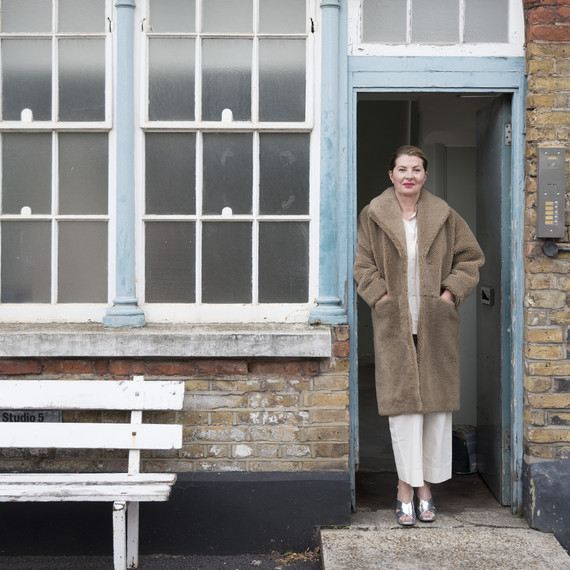»Interior design is a process which makes spaces livable.«
Interview with Ilse Crawford
Based in London, renowned British designer, creative director and educator Ilse Crawford has worked on numerous commercial and residential interior design projects, including the New York branch of the »Soho House« club and the »Ett Hem« hotel in Stockholm. At the Design Academy Eindhoven, Ilse established the »Man and Well-Being« department, serving as its head for more than twenty years. For the exhibition »Home Stories«, we talked to her about her work and her vast experience in the field of interior design.
What is interior design about, would you say?
Essentially for us it’s a process, which makes spaces livable and addresses our well-being in the sense of making spaces that enable us to live life more fully. As with architecture, it’s a process, which can realize and materialize a set of abstract values to create a new reality that makes sense.
Do you prefer to work on a project from the outset or to collaborate with architects?
The more successful interiors always integrate the architecture and the interior from the beginning. Very often, unfortunately, the client only brings in the interior designer when he or she has realized that the architect is not going to give them what they thought. We did a project once where initially the architect was grumpy when we got involved; he said he was uninterested in people, because his main responsibility was to the building. Yet this client had a young family, and the architect had put the sitting room overlooking the garden, and the kitchen in a tiny space looking out to the wall next door. I asked the client’s wife what her life was like: »I’m in the kitchen twelve hours a day with the kids. I’m in the living room for an hour on Sunday – maybe«, she said. So we moved the kitchen into the nicer space overlooking the garden and put a snug into the smaller space while figuring out with the architect how to keep the architectural integrity of the bigger space. Architects aren’t trained to ask these intimate questions. Their focus is a lot more on the architectural expression, the building’s role in the street, in the city, the restoration. They take a different perspective on a building.
What made you want to work in interior design?
I never went out of my way to work in interior design! However, I have always been fascinated by how buildings affect us and can change behavior – how they change the way we feel and how we do things. I see clearly how some spaces create a feeling of freedom and other spaces do the opposite. I studied history and history of architecture and was keen on becoming an architect, but that didn’t happen. Instead, I became a journalist. I worked on Architects’ Journal, and was then asked to do Elle Décoration in 1989. My interest was in how space could be discussed as a whole – as placemaking – and how interiors could be an integral part of making and shaping new realities. I certainly didn’t identify with the way design was discussed at the time, it was all about »the look« and social aspiration, country living, Ralph Lauren, or matte black, whereas I’d grown up with punk, Vivienne Westwood, and Tom Dixon.
You can find all information on the exhibition »Home Stories: 100 Years, 20 Visionary Interiors« here.
